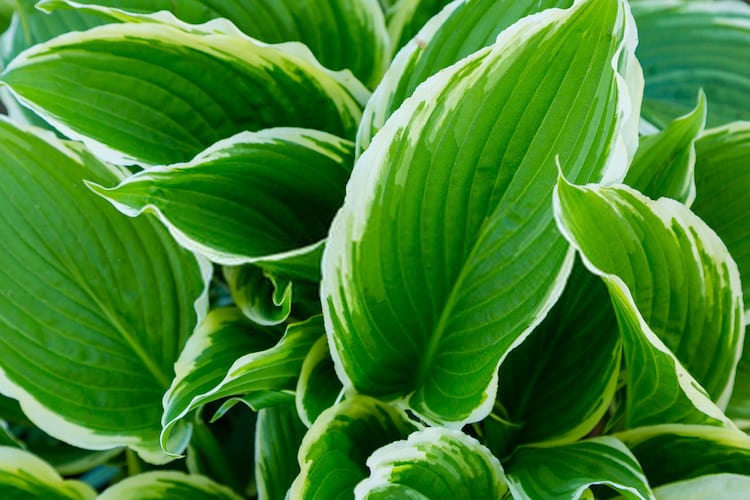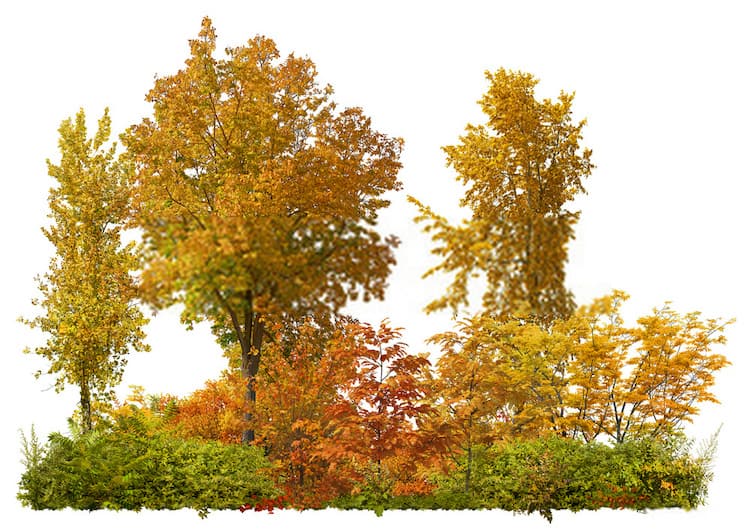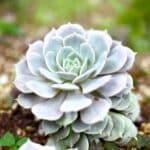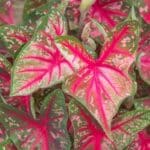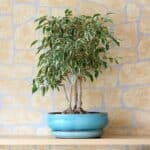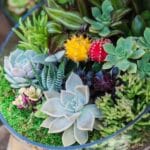Herbaceous and woody plants are two types of plants classified based on their life-cycle as biennials, perennials and annuals, and their ability to produce wood.
The main distinguishing factor between herbaceous plants vs woody plants is that herbaceous plant possesses a soft and flexible stem, such as the Garden phlox (Phlox paniculata) and Rodgers flower (Rodgersia). While the woody plants have a strong and not easily bendable stem, for example, trees and shrubs.
In today's guide, you will learn everything you need to know about herbaceous plants and woody plants, their differences, similarities, and examples.
Table of Contents
Herbaceous Plants vs Woody Plants
When comparing herbaceous plants vs. woody plants, the former are non-woody plants, such as most herbs and grasses.
Unlike woody plants, such as trees, these plants lack a stem that will remain above the ground when their utmost trees stem and leaves die down to soil level at the end of every growing cycle.
Let’s have a look at further distinguishing factors.
What are Herbaceous Plants?
Herbaceous plants are plants with no persistent woody stems, the non-woody stem is green, soft, flexible, and grows above ground level.
They are also known as herbs in which the top plant growth dies back at the end of every growth cycle. They are mostly classified into three types; herbaceous plants are perennial, annual, and biennial.
Furthermore, the anatomy of a herbaceous plant shows that its cell wall is mainly made of cellulose, which makes it somewhat fragile and flexible.
While the stem cells of a woody plant are made of lignin, which is made of stronger components assisting the plant with firmness, and which makes them lasts longer.
Herbaceous plants are usually fast-growing, producing lots of seedlings within a short duration. Their plants are cultivated by seed; they may be recultivated each year by new growth from dormant roots.
They can be classified according to their life cycles as perennials, annuals, and biennials.
Perennial herbaceous plants
These are non-woody plants that die back to soil level once the cold temperatures return. However, their roots are able to survive because of their underground plant which helps them regrow in spring.
Columbine (Aquilegia), Montauk daisies (Nipponanthemum nipponicum) grasses, and most ferns are perennial herbaceous plant examples.
Other examples are daisies, delphiniums, mint, tarragon, hostas salvia, peonies columbine, mums, potatoes, catnip, etc. are perennial herbaceous plants.
Biennial herbaceous plants
In the second year of the growing cycle these plants die after blooming and only the underground parts of these herbaceous plants survive in winter.
Examples of biennial herbaceous plants are Stevia, sage, parsley, ragwort, lettuce, parsnips Black-Eyed Susan, carrots, spinach, onions, and carrots.
Annual herbaceous plants
These plants bloom and produce fruits and immediately after winter they die. The only way to enjoy these plants is to be replanted every year. Dill, basil, German chamomile fennel, winter savory, cilantro, marjoram, chervil, etc. are annual herbaceous plants.
Read Also: Types of Plants Found in The Desert
What are Woody Plants?
Woody plants are the plants with a hard and strong stem that is not easily bendable such as trees and shrubs. Woody plants produce wood in the form of structural tissue, the branches' roots and stems are usually covered with a layer of bark covering.
The structural tissue the woods produce serves as a cellular adaptation that helps them survive harsh weather like winters and promotes continuous growth instead of death.
This adaptation, however, makes them the tallest and largest terrestrial plants. Woody plants are mainly made of xylem cells with cell walls made up of cellulose and lignin. The woody stems of a wood plant regenerate annually by forming a new layer of woody tissue each year, increasing the diameter of the stem.
In some trees, these tissue layers are found inside a tree if you were to cut it down whereas, in some In some woody plant such as palms, the woody tissue is formed in bunches that are scattered through the interior of the trunk
The two main types of woody plants are deciduous and evergreen. In evergreen plants, the stem survives throughout the year. The branches and trunks of the deciduous plants stay alive in winter but, during fall, all their leaves fall off.
Woody plants can either be a shrub or a tree:
Tree
A tree is a perennial plant with a single elongated stem. They can grow to a height of (at least 13 feet) above the soil level.
The diameter of a tree is more than 3 inches. Trees are known to reproduce using seeds, fruits and flowers may be present but some trees such as conifers have pollen and seed cones instead.
Shrub
A shrub is a perennial woody plant, it could be small or medium in size. Unlike herbaceous plants, they have firm woody stems above the ground level. Several evergreen or deciduous stems occur in shrubs but, their height is less than 6m-10m (20 ft-33ft) tall.
The diameter of the stem is usually around 3 inches. Witch hazel, holly, roses forsythia, lilacs, red twig dogwood rose of Sharon, hibiscus, etc are some of the examples of shrubs.
Difference Between Woody and Herbaceous Plants
Color of the Stem
The stem of herbaceous plants remains green while the stem of the woody plants is covered with a covering called bark. Also, herbaceous plants have a flexible and soft stem while woody plants have a strong stem.
Size
Herbaceous plants are small and short in comparison to woody plants which are the largest and tallest terrestrial plants on earth.
Similarities Between Herbaceous and Woody Plants
- Herbaceous and woody plants can be perennials
- They are two types of plants classified based on their life cycle and
- Ability to produce wood.
- Moreover, the woody plants are mainly perennials while the herbaceous plants can be annuals, biennials, or perennials. Therefore, woody plants grow in size every season while herbaceous plants may die back every growing season.
Read Also: Types of Plants in The Ocean
Conclusion
The herbaceous plants have a strong and flexible stem that causes them to die back after every growing season. While the woody plants have a strong stem made up of wood that enables them to grow larger and longer in size.
Herbaceous plants can be perennials, annuals, or biennials. On the other hand, woody plants are perennials that grow in every growing season. The main difference between herbaceous plants vs woody plants is their life cycles and stem features.

